Abstract
OBJECTIVE: To study nonmedical influences on the doctor-patient interaction. A technique using simulated patients and "real" doctors is described. DATA SOURCES: A random sample of physicians, stratified on such characteristics as demographics, specialty, or experience, and selected from commercial and professional listings. STUDY DESIGN: A medical appointment is depicted on videotape by professional actors. The patient's presenting complaint (e.g., chest pain) allows a range of valid interpretation. Several alternative versions are taped, featuring the same script with patient-actors of different age, sex, race, or other characteristics. Fractional factorial design is used to select a balanced subset of patient characteristics, reducing costs without biasing the outcome. DATA COLLECTION: Each physician is shown one version of the videotape appointment and is asked to describe how he or she would diagnose or treat such a patient. PRINCIPAL FINDINGS: Two studies using this technique have been completed to date, one involving chest pain and dyspnea and the other involving breast cancer. The factorial design provided sufficient power, despite limited sample size, to demonstrate with statistical significance various influences of the experimental and stratification variables, including the patient's gender and age and the physician's experience. Persistent recruitment produced a high response rate, minimizing selection bias and enhancing validity. CONCLUSION: These techniques permit us to determine, with a degree of control unattainable in observational studies, whether medical decisions as described by actual physicians and drawn from a demographic or professional group of interest, are influenced by a prescribed set of nonmedical factors.
Full text
PDF






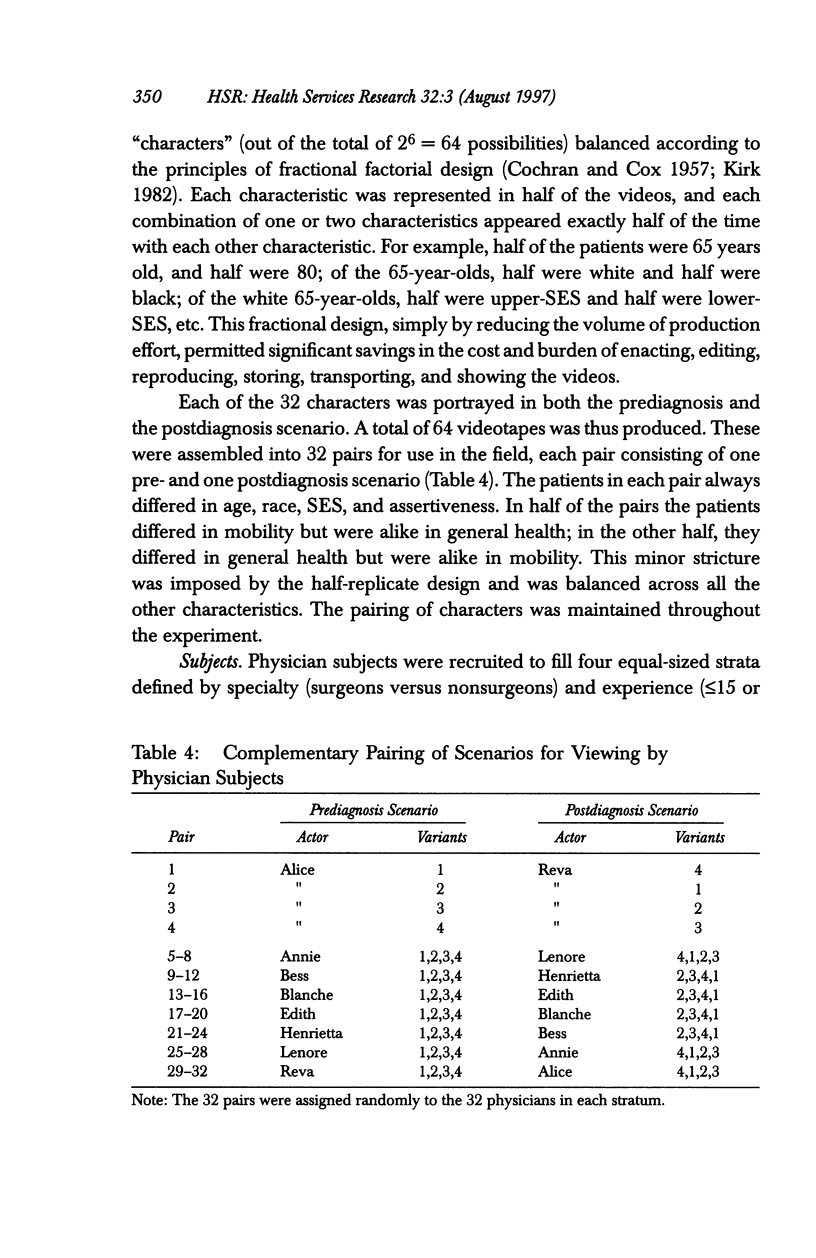




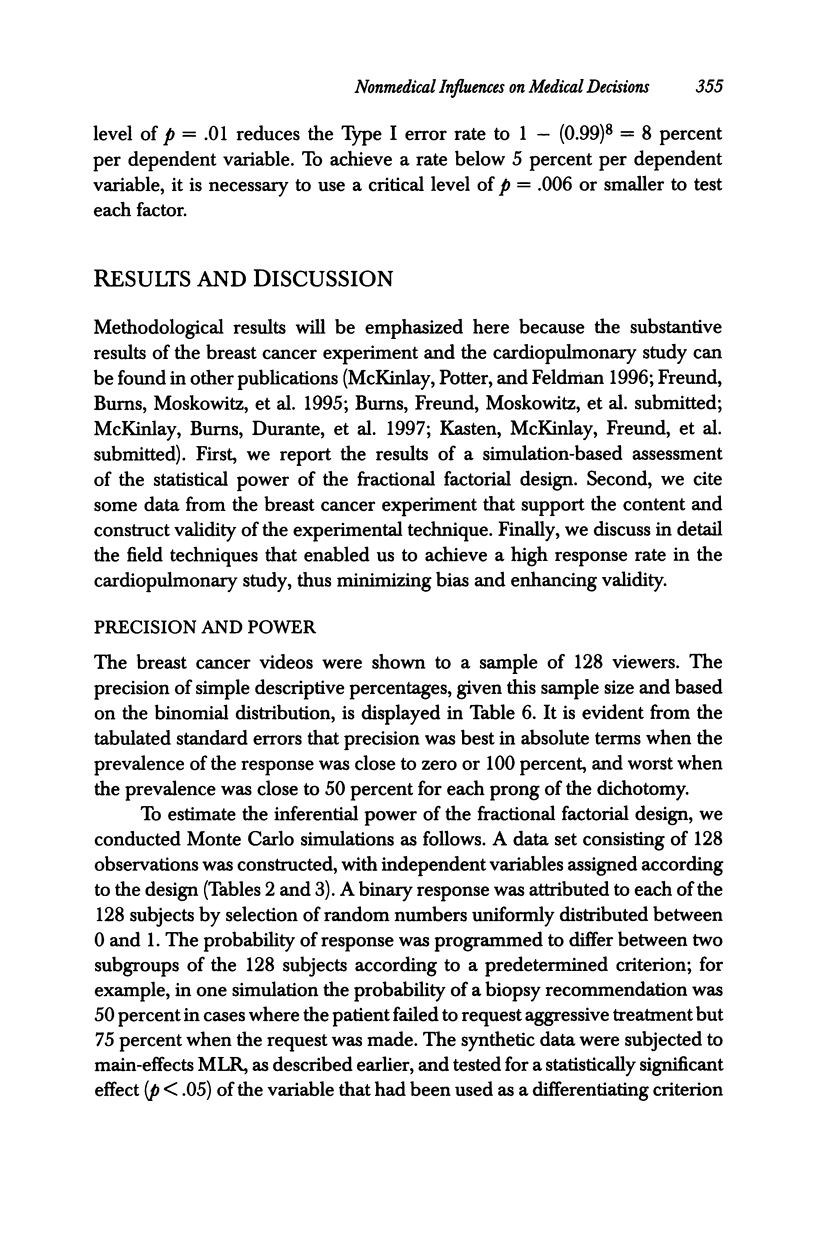
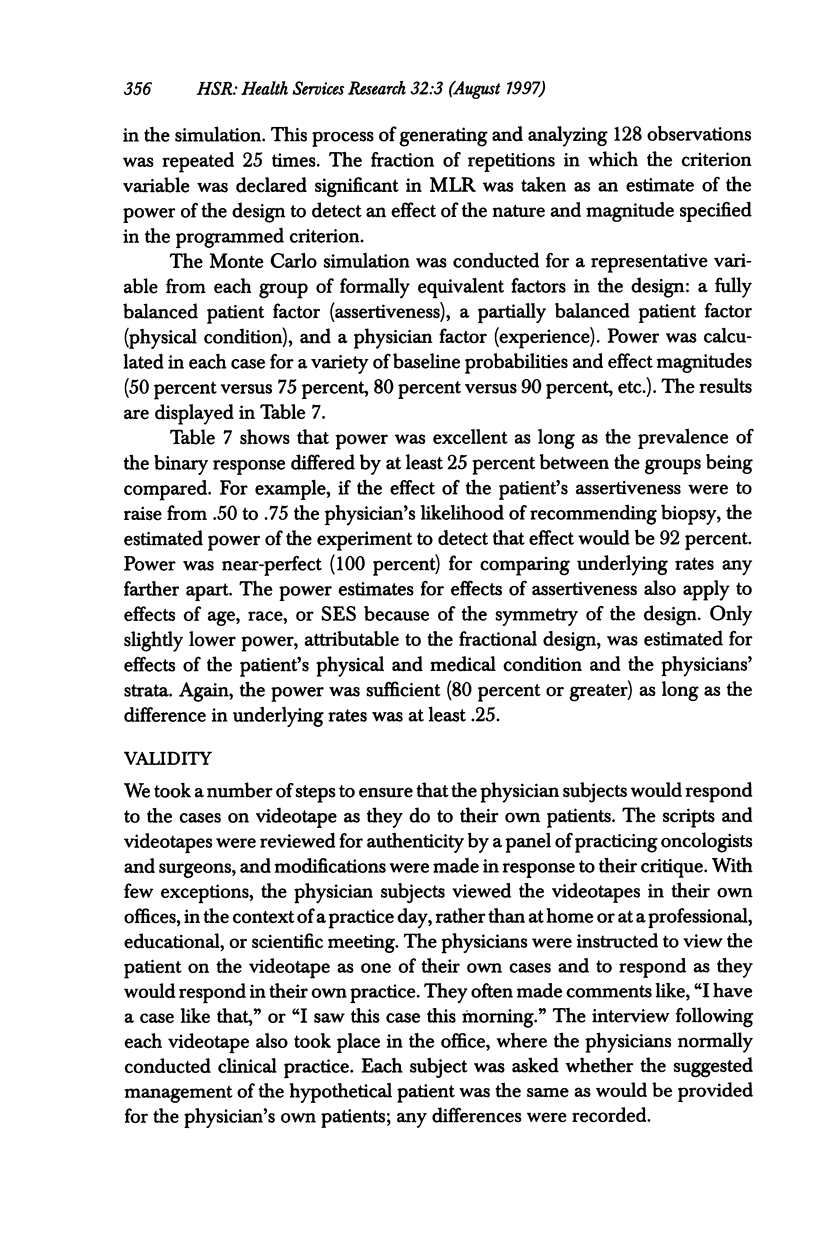


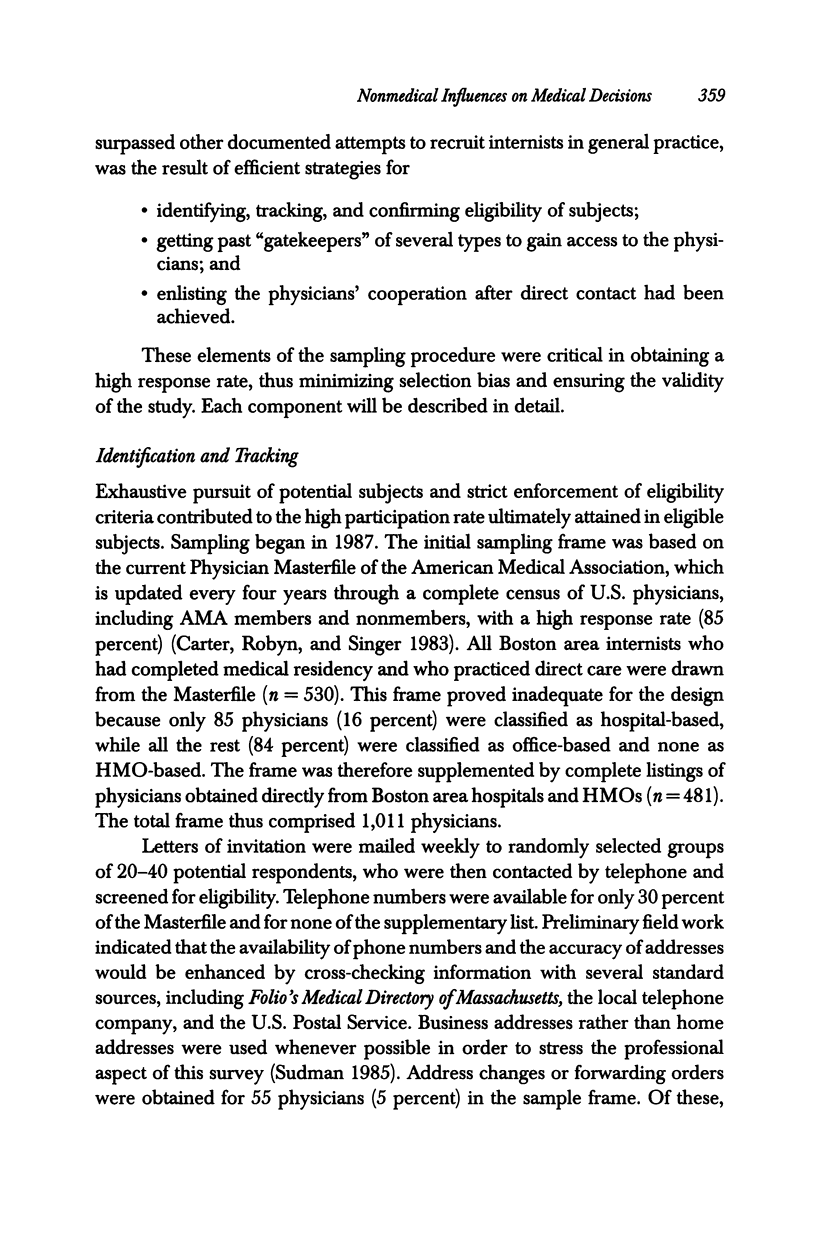



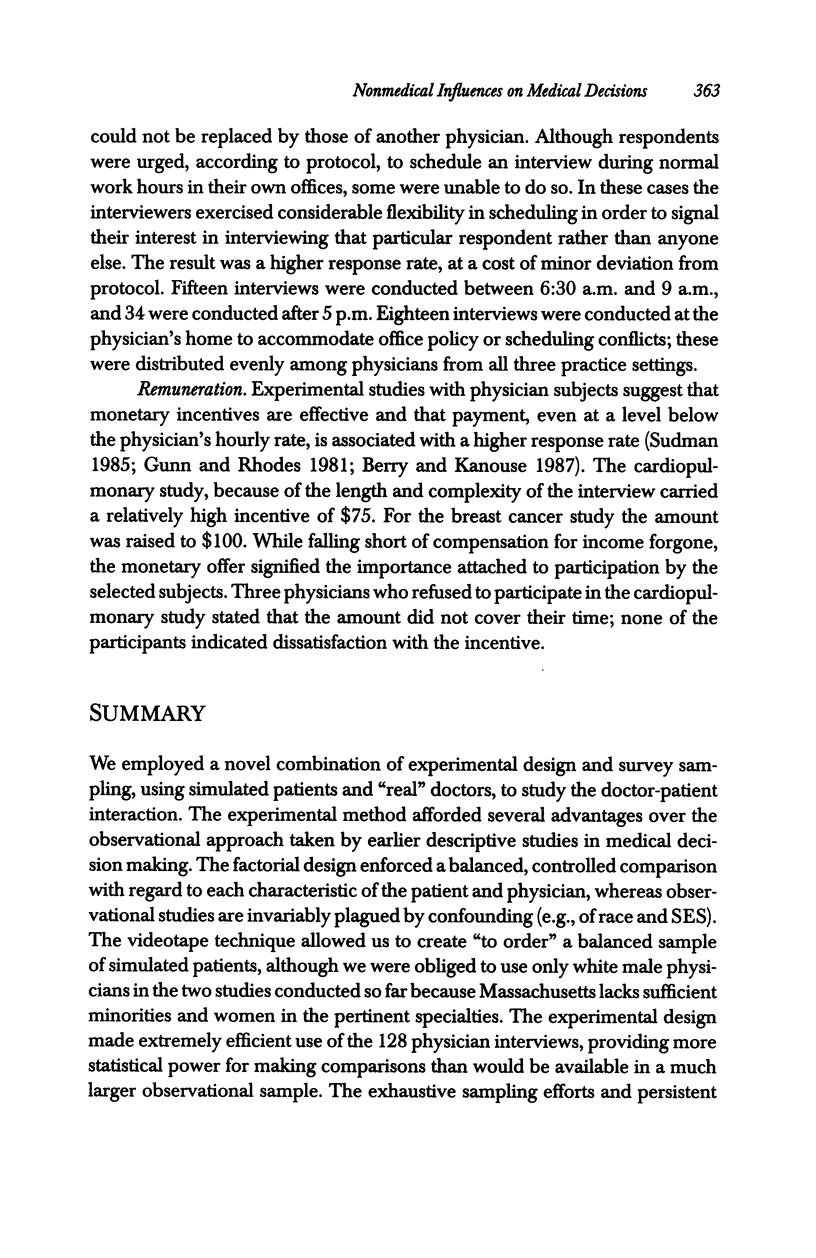



Selected References
These references are in PubMed. This may not be the complete list of references from this article.
- Ayanian J. Z., Kohler B. A., Abe T., Epstein A. M. The relation between health insurance coverage and clinical outcomes among women with breast cancer. N Engl J Med. 1993 Jul 29;329(5):326–331. doi: 10.1056/NEJM199307293290507. [DOI] [PubMed] [Google Scholar]
- Belanger D., Moore M., Tannock I. How American oncologists treat breast cancer: an assessment of the influence of clinical trials. J Clin Oncol. 1991 Jan;9(1):7–16. doi: 10.1200/JCO.1991.9.1.7. [DOI] [PubMed] [Google Scholar]
- Chu J., Diehr P., Feigl P., Glaefke G., Begg C., Glicksman A., Ford L. The effect of age on the care of women with breast cancer in community hospitals. J Gerontol. 1987 Mar;42(2):185–190. doi: 10.1093/geronj/42.2.185. [DOI] [PubMed] [Google Scholar]
- Clark J. A., Potter D. A., McKinlay J. B. Bringing social structure back into clinical decision making. Soc Sci Med. 1991;32(8):853–866. doi: 10.1016/0277-9536(91)90241-4. [DOI] [PubMed] [Google Scholar]
- Greenfield S., Blanco D. M., Elashoff R. M., Ganz P. A. Patterns of care related to age of breast cancer patients. JAMA. 1987 May 22;257(20):2766–2770. [PubMed] [Google Scholar]
- Gunn W. J., Rhodes I. N. Physician response rates to a telephone survey: effects of monetary incentive level. Public Opin Q. 1981 Spring;45(1):109–115. doi: 10.1086/268638. [DOI] [PubMed] [Google Scholar]
- Haug M. R., Ory M. G. Issues in elderly patient-provider interactions. Res Aging. 1987 Mar;9(1):3–44. doi: 10.1177/0164027587009001001. [DOI] [PubMed] [Google Scholar]
- Henderson S. R. The periodic survey of physicians: design and methodology. Profile Med Pract. 1978:177–186. [PubMed] [Google Scholar]
- McKinlay J. B., Potter D. A., Feldman H. A. Non-medical influences on medical decision-making. Soc Sci Med. 1996 Mar;42(5):769–776. doi: 10.1016/0277-9536(95)00342-8. [DOI] [PubMed] [Google Scholar]
- Samet J., Hunt W. C., Key C., Humble C. G., Goodwin J. S. Choice of cancer therapy varies with age of patient. JAMA. 1986 Jun 27;255(24):3385–3390. [PubMed] [Google Scholar]
- Silliman R. A., Guadagnoli E., Weitberg A. B., Mor V. Age as a predictor of diagnostic and initial treatment intensity in newly diagnosed breast cancer patients. J Gerontol. 1989 Mar;44(2):M46–M50. doi: 10.1093/geronj/44.2.m46. [DOI] [PubMed] [Google Scholar]
- Yancik R., Ries L. G., Yates J. W. Breast cancer in aging women. A population-based study of contrasts in stage, surgery, and survival. Cancer. 1989 Mar 1;63(5):976–981. doi: 10.1002/1097-0142(19890301)63:5<976::aid-cncr2820630532>3.0.co;2-a. [DOI] [PubMed] [Google Scholar]


